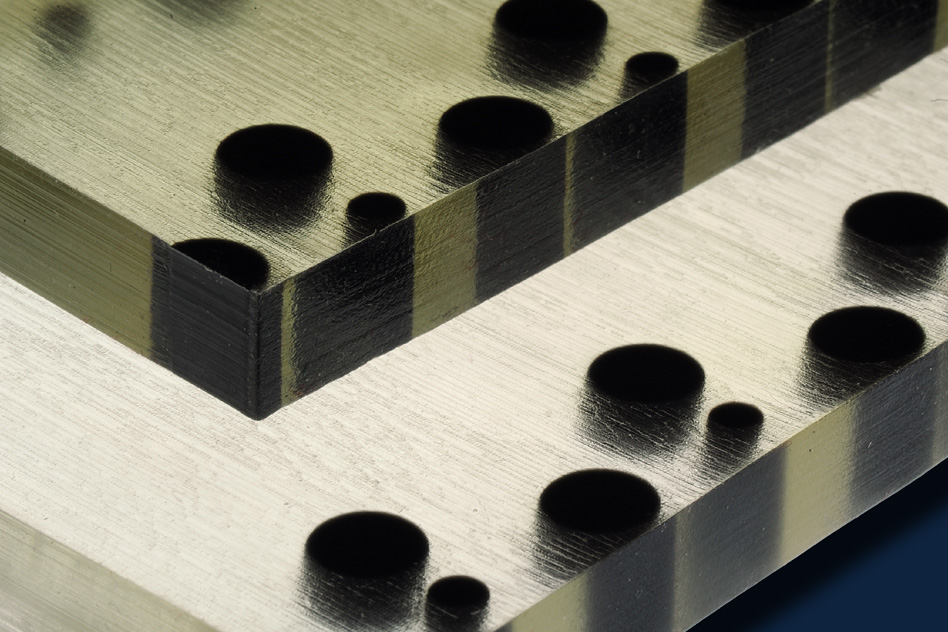MIT Develops 3D Printed Material with Variable Topology

The clear areas of this polymer represent soft materials, while the darker areas represent hard materials. When subjected to stress, the hard materials come to the fore, producing an altered topography. Courtesy of MIT.
Latest News
June 15, 2015
The majority of the time Rapid Ready discusses additive manufacturing (AM) and breakthrough materials, it’s about materials meant to be used in a 3D printer. It’s less common (though becoming more so) that AM brings about the development of a new material.
MIT researchers have developed a new method of manufacturing soft materials through the use of AM. By combining both hard and soft materials in a single object, researchers have created a material that can change its surface topology on demand. A squeeze can bring out preprogrammed textures, and other manipulations offer the possibility of rerouting fluids inside an object.
 The clear areas of this polymer represent soft materials, while the darker areas represent hard materials. When subjected to stress, the hard materials come to the fore, producing an altered topography. Courtesy of MIT.
The clear areas of this polymer represent soft materials, while the darker areas represent hard materials. When subjected to stress, the hard materials come to the fore, producing an altered topography. Courtesy of MIT.“Depending on the arrangement of the particles, using the same amount of compression, you can get different surface topographies, including ridges and bumps, along the surface,” said MIT graduate student Mark Guttag.
The material can change surface topology as a result of embedded materials printed into it during AM fabrication. The embedded materials repeatedly and reliably alter the topology as a result of applied pressure. Researchers claim it is possible to create simple and highly complex topologies.
A simple change to the topology could change the aerodynamic resistance of an object, or its reflectivity. A more complex design could create microfluidic channels within the material to assist control of liquids inside a chemical or biological detector.
Other potential applications include use in camouflage, creating surfaces that attract or repel water, reduce drag and even decrease the buildup of organisms on the surface of a ship or boat. Though not included in MIT’s list of potential applications, I could see the material being useful for objects that would benefit from an improved gripping surface during specific conditions, such as a golf club during rain.
“This is the first-of-its-kind work to create materials with reconfigurable surface texture,” commented Yonggang Huang, a professor at Northwestern University who was not involved in this work. “The potential practical impact of this work is huge. It can be used in many applications that benefit from the change of surface, such as in optics and tribology [the science of interacting surfaces in motion].”
Research results were recently published in the journal Advanced Functional Materials under the title “Locally and Dynamically Controllable Surface Topography Through the Use of Particle-Enhanced Soft Composites.” Below you’ll find a video about MIT’s Department of Materials Science and Engineering.
Source: MIT
Subscribe to our FREE magazine, FREE email newsletters or both!
Latest News
About the Author
John NewmanJohn Newman is a Digital Engineering contributor who focuses on 3D printing. Contact him via [email protected] and read his posts on Rapid Ready Technology.
Follow DE





